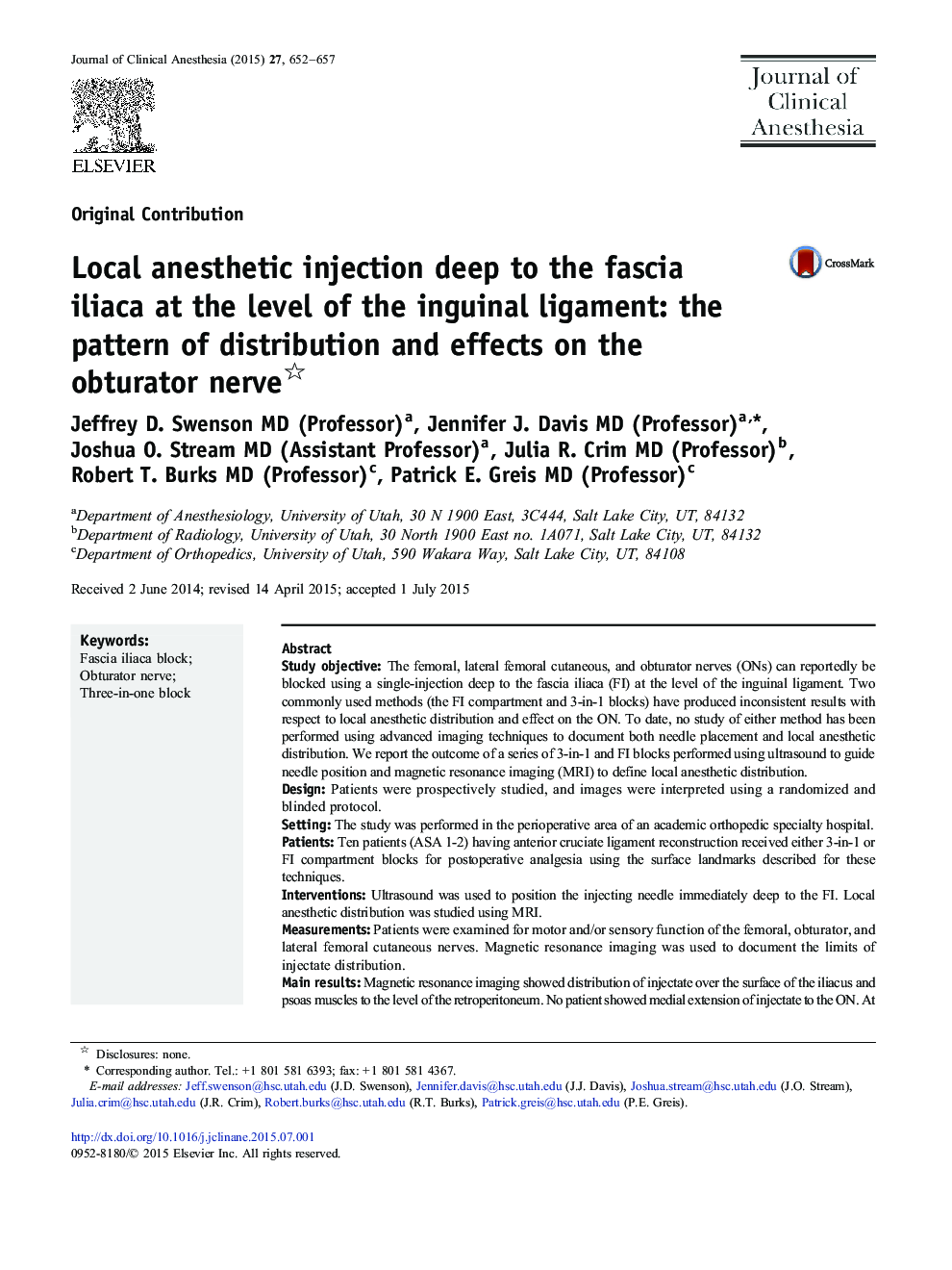| Article ID | Journal | Published Year | Pages | File Type |
|---|---|---|---|---|
| 2762196 | Journal of Clinical Anesthesia | 2015 | 6 Pages |
•Understanding the anatomy of the fascia iliaca.•Single-injection techniques and the obturator nerve.•The importance of needle position.
Study objectiveThe femoral, lateral femoral cutaneous, and obturator nerves (ONs) can reportedly be blocked using a single-injection deep to the fascia iliaca (FI) at the level of the inguinal ligament. Two commonly used methods (the FI compartment and 3-in-1 blocks) have produced inconsistent results with respect to local anesthetic distribution and effect on the ON. To date, no study of either method has been performed using advanced imaging techniques to document both needle placement and local anesthetic distribution. We report the outcome of a series of 3-in-1 and FI blocks performed using ultrasound to guide needle position and magnetic resonance imaging (MRI) to define local anesthetic distribution.DesignPatients were prospectively studied, and images were interpreted using a randomized and blinded protocol.SettingThe study was performed in the perioperative area of an academic orthopedic specialty hospital.PatientsTen patients (ASA 1-2) having anterior cruciate ligament reconstruction received either 3-in-1 or FI compartment blocks for postoperative analgesia using the surface landmarks described for these techniques.InterventionsUltrasound was used to position the injecting needle immediately deep to the FI. Local anesthetic distribution was studied using MRI.MeasurementsPatients were examined for motor and/or sensory function of the femoral, obturator, and lateral femoral cutaneous nerves. Magnetic resonance imaging was used to document the limits of injectate distribution.Main resultsMagnetic resonance imaging showed distribution of injectate over the surface of the iliacus and psoas muscles to the level of the retroperitoneum. No patient showed medial extension of injectate to the ON. At the level of the inguinal ligament, injectate extended laterally toward the anterior superior iliac spine and medially to the femoral vein. All patients had significant weakness with extension of the knee and sensory loss over the anterior, lateral, and medial thigh. No patient demonstrated decreased hip adductor strength.ConclusionsUltrasound and MRI show consistent superior extension of local anesthetic to the level of the retroperitoneum for both techniques. There was reliable clinical effect on the femoral and lateral femoral cutaneous nerves. However, none of the injections produced evidence of ON block either at the level of the retroperitoneum or the inguinal ligament.
